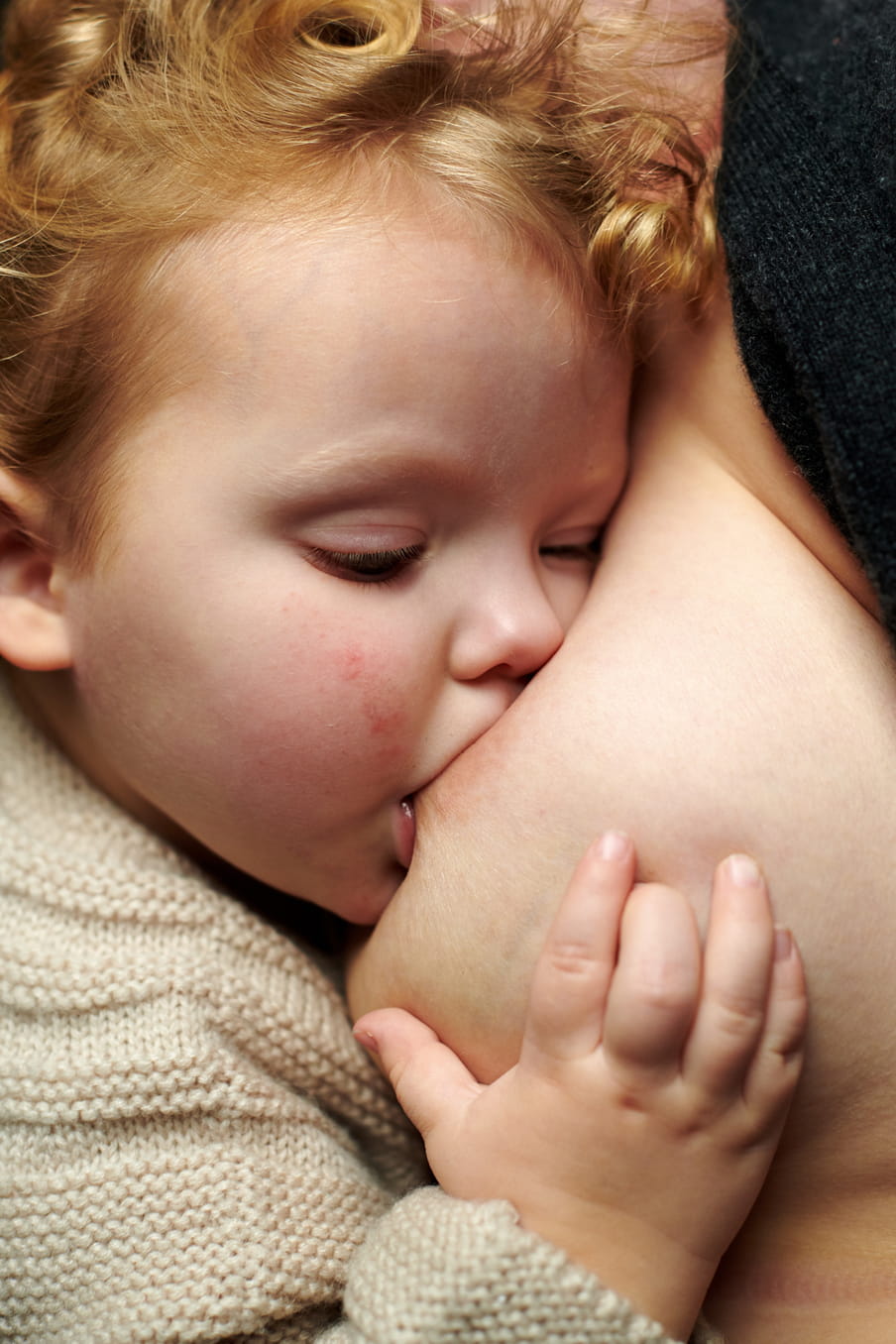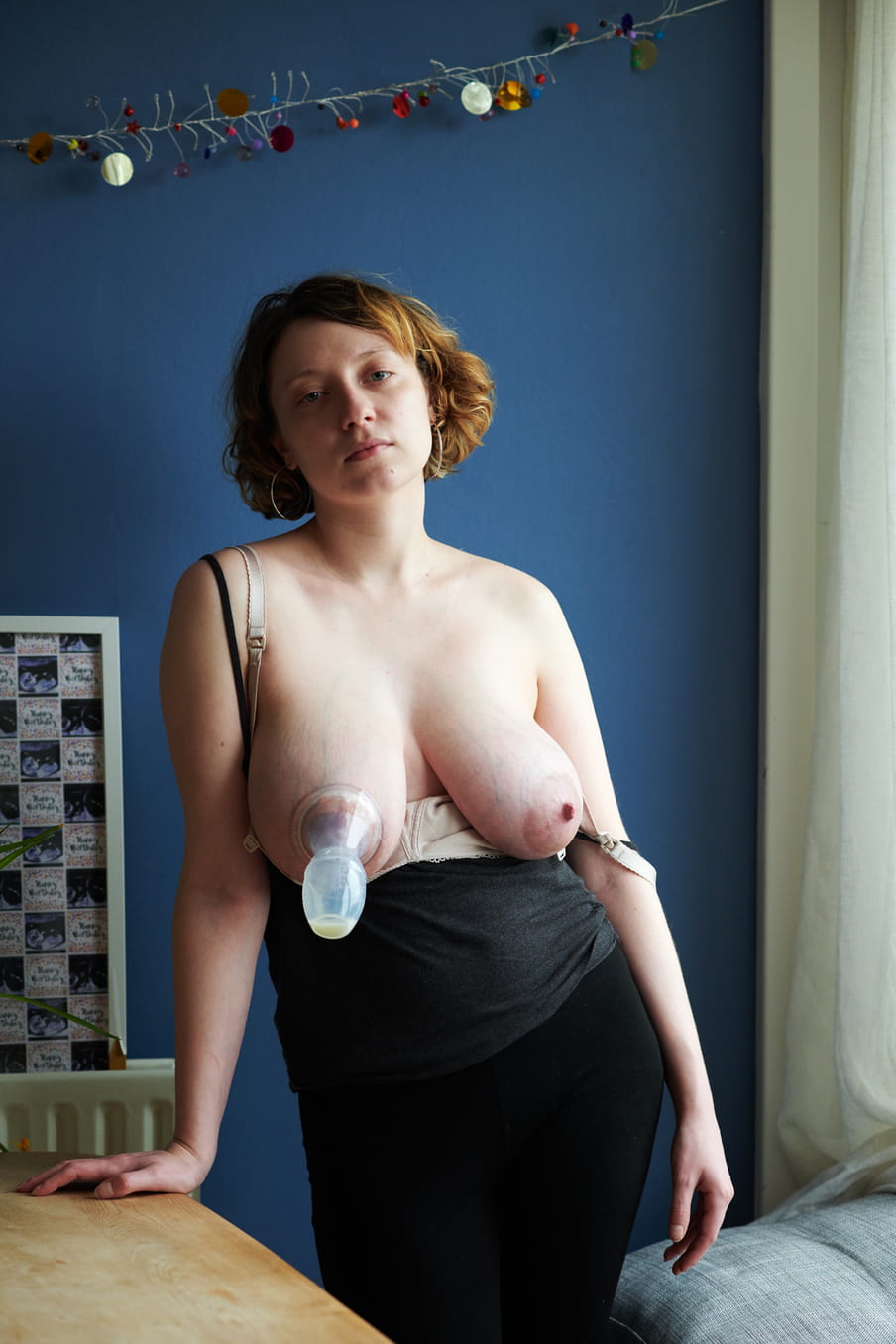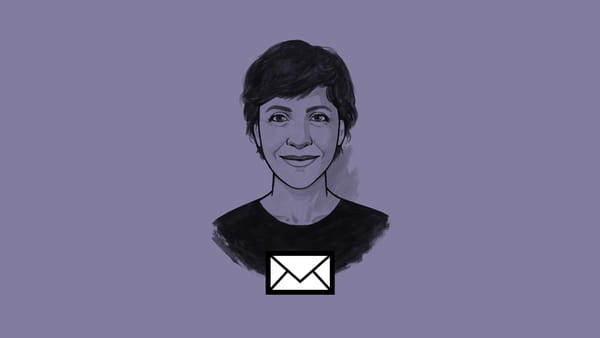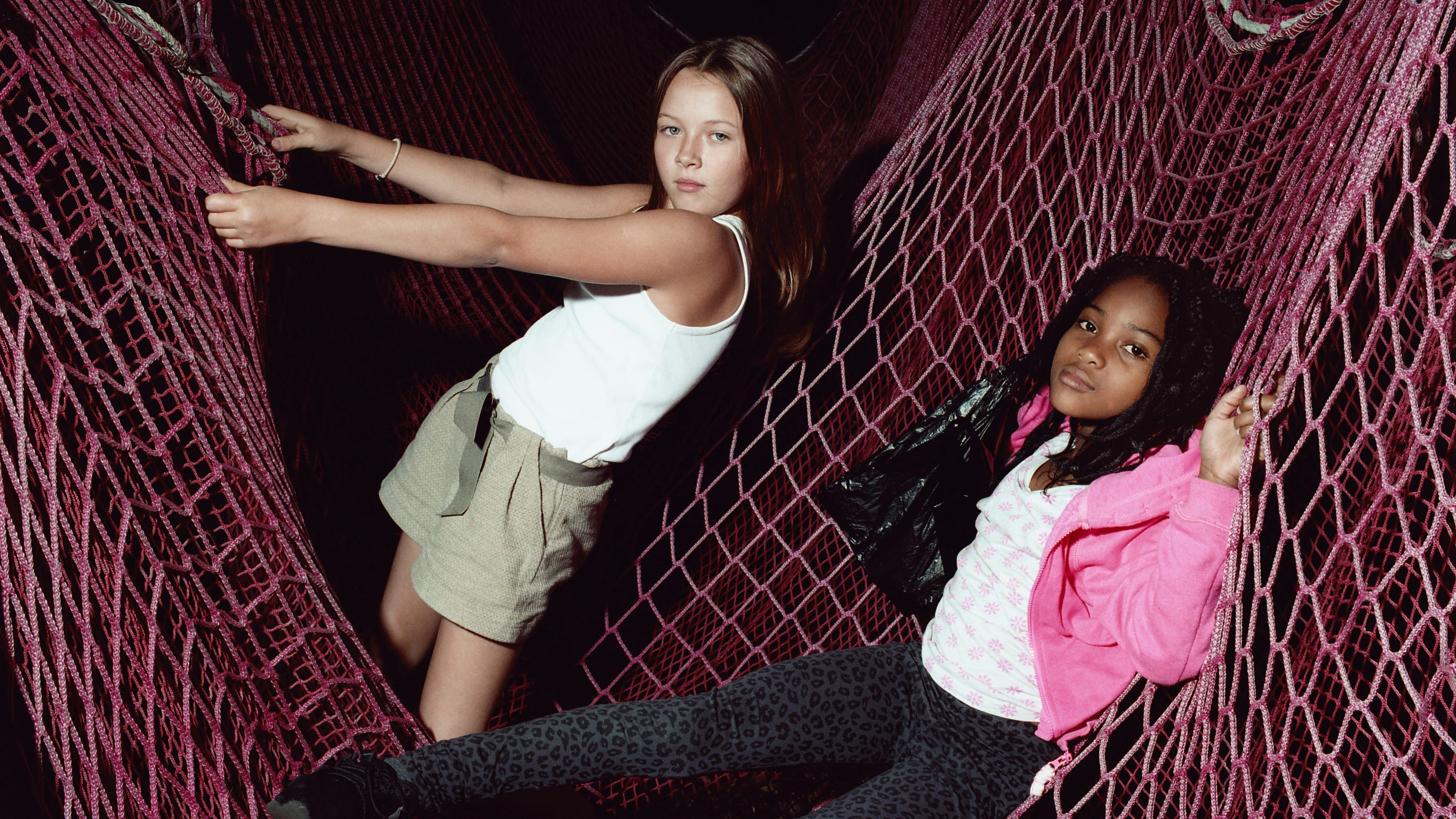We seem to put the boob before the baby. When it comes to breastfeeding – from where it’s appropriate to feed, and for how long, to coping with the pain when babies don’t latch on properly – there’s more polarising debate about the act of feeding a baby from one’s mammary glands than appreciation for the substance of breast milk itself.
Even when human milk does get our attention, conversation tends to revolve around the logistics: whether babies drink enough of it, how and where they access it, or possible substitutes. It’s easy to see why. The impact of breastfeeding extends far beyond the lactating parent and child: to the economy, the healthcare sector and employers. The implications are felt in wider gender dynamics and reverberate across any number of cultural norms.

So how much do we actually know about breast milk – besides the facts that it’s good for babies, isn’t always produced as easily or as readily as we’d like (or often believe), and that progressive societies are still trying to figure out ways that babies of working parents can be breastfed?
As I started researching human milk, I discovered little-known wonders. Did you know that when a baby is sick, breast milk may contain higher levels of antibodies that can help fight infection? Or that at night, breast milk has higher melatonin content – the hormone that regulates sleep – to make a feeding baby feel sleepy? How about the fact that at high altitudes, the fat content of breast milk increases to help babies better withstand cooler outside temperatures?
When you think about it, this sounds like the stuff an eager, imaginative entrepreneur in Silicon Valley would try to invent in the name of greater efficiency: a living food that changes according to circumstances, customisable to different times of day, geographical location and the varying health status of its consumer.
Instead, all these attributes of human milk are the product of millions of years of evolution.
Next to the fascinating properties we already know, more may yet emerge. Scientific inquiry into human milk remains limited: the US National Library of Medicine website lists almost a million articles on pregnancy, about 200,000 on birth, 150,000 on contraception, but just 40,000 on human milk.

The elephant (milk) in the room
Aside from our relatively scarce knowledge, some of the claims about breast milk can be quite sketchy. Emily Oster, an economist, uncovers some of the unreliable data about human milk in her book, Cribsheet. The often repeated claim that breastfeeding reduces childhood obesity, for example, is based on studies that were not adjusted for socioeconomic factors.
Before I go on, let’s address the elephant in the room: formula milk. It’s hard to talk about the benefits of human milk without implying that artificial milk, or formula, is inferior. That highly charged debate is not what this piece is about. Whatever your stance on breastfeeding, the point is that formula is an attempt to reproduce human milk – that’s why I’ve tried to interrogate how much we really know about the kind produced by mammary glands.

Invariably, media attention is drawn instead to the “breast milk vs formula” debate, often dubbed – in somewhat derogatory terms – the “mommy wars”, a description which once again shifts the focus away from the substance itself. If coverage does not focus on warring parents, it veers instead towards the humorous or perverse. Elizabeth A Quinn, an anthropologist specialising in human lactation at Washington University in St Louis, Missouri, told me that she received her first call from journalists after a report that bodybuilders, seeking richer sources of protein, had started to buy human milk off Craigslist.
Our limited scientific understanding of lactation is significant, because what we know shapes culture and policy. Where the information we have is insufficient, replete with misunderstandings or myths, the best science is drowned out by the noisier face-off between breast milk advocates and formula milk producers. When this happens, we all lose out. The state of our shared knowledge affects our ability to prioritise human milk as an ideal food for babies, and consequently to provide adequate infrastructure and support for lactating parents.
A constantly changing recipe
A first and frequent error is to assume that the importance of breast milk can be measured simply in terms of calories. From there, it’s tempting to conclude that other foods of equal calorific value are viable substitutes – like swapping pasta for rice or bread. Breast milk is a mix of water, fat, sugar, protein and vitamins that can be sourced or recreated in other compounds, but unlike all the types of milk at a grocery store – including formula milk – human milk is alive. As Quinn told me: “Human milk is more than what you can write down on a nutritional label.”

We know, for example, that the composition of breast milk – its fat and other content – changes in the course of a single feed, as well as throughout the period of lactation. As I mentioned, breast milk adapts to a baby’s health and conditions to provide immunological support. With wondrous synchronicity, the level of protective bacteria-fighting enzymes in human milk increases towards the end of the first year of life, just as babies start to explore the world – not least by putting all sorts of things in their mouths.
We can marvel, but what we still don’t know is how these immunological changes occur. Some scientists think the answer may lie in the baby’s saliva. According to this theory, when attached to the breast, a baby’s spit can interact with the milk in some way that sends a signal back to the mammary gland to adjust the milk’s composition. This hypothesis isn’t proved, but could tally with findings from other experiments. For example, one study found that combining a baby’s saliva with breast milk causes a chemical reaction that can kill salmonella.
Without a firm understanding of its living qualities, it becomes difficult for us to differentiate human milk from substitutes that can be delivered by other means. Feeding babies with human milk requires an enabling environment, and ideally a safe space for parent-child interaction (by allowing lactating parents to work fewer hours in the day, for example, or to step out for longer breaks). Without this understanding, such factors are relegated to at best a secondary consideration.

Pumps and policies
A clear example of this is the popularity of pumping in the United States. Breast pumps have evolved from technology devised to milk cows. Initially, they were introduced as sophisticated medical equipment to help women with inverted nipples or mothers of premature babies to express their milk.
From 1998, funding for food stamps was diverted to cover the costs of buying or renting pumps. By 2011, pumps were made tax-deductible
By the early 1990s, the same technology was readily available outside hospitals. Breast pumps have enabled working mothers to store milk. As breasts supply milk in response to demand, pumping made it possible for women to continue to produce milk after returning to work – in addition to leaving stored milk with their babies while they were at work.
Rather than change policies for the amount of maternity leave available, the US government readily cleared the way for pumping to become mainstream, as US historian Jill Lepore illustrates in a convincing essay. In 1998, Congress authorised states to allocate funding normally destined to food stamps to meet the costs of buying or renting pumps. In 2010, federal labour laws were amended to require employers to provide adequate time and space – other than a bathroom – for mothers to pump. In 2011, pumps were made tax-deductible.
But what if pumping, by taking the sucking baby out of the feeding process, inhibits adaptation of the milk’s properties in response to the baby’s health or environment – as we know, with categorical proof, that breast-fed milk can do? What if the crucial element in the breastfeeding equation is the mother’s presence, rather than merely the milk in the breast?
And how much else don’t we know, while policymakers forge ahead?
That question has no answer – yet. But it’s impossible to ignore that our limited understanding of human milk reflects the simple fact that vastly more funding for research is available from manufacturers of formula milk. These companies have a commercial agenda to replace breast milk – not celebrate it.
A formula for narrow minds?
Formula has played an indispensable role in helping women who can’t lactate for medical reasons. It’s valuable for adoptive and trans parents, among others, and has enabled many women to participate more fully in the job market. However, the dominant voice of formula manufacturers in much of the public discourse has narrowed the scope of discussion of breastfeeding and human milk.
Aunchalee Palmquist, a medical anthropologist and lactation specialist, cites the tendency to think about human milk purely in terms of calories as one example of the influence of companies: “Twenty years ago, studies looked at calories and carbohydrates and sugar. It led to this very common misunderstanding that formula is just the same as human milk.”

A further risk in focusing so much attention on the case for human milk, even as we seek to better understand its properties, is that the specific features of milk are viewed separately from the act of breastfeeding. Feeding babies isn’t important only for nutrition. It serves a developmental purpose too. "If you take milk from a breast and then put it in a biobank ... you’re missing a really important part of the picture: the mother-baby interaction, the contact, the history," Palmquist told me.
Our limited understanding of how breast milk changes according to a baby’s needs has contributed to policies which probably don’t serve best the needs of babies. Similarly, the tendency to reduce debate to the relative merits of human milk has obscured the crucial importance of mother-baby interaction for child development. This pattern is self-reinforcing, in so far as narrow arguments are often reflected in policy decisions and public attitudes – not least in the workplace.
The science of what happens between boob and baby is fundamental. An astonishing – though little understood – product of human evolution. It’s in the interests of humankind, of our species, to respect this interaction. First, for the sake of all babies and all parents, we need more science on the properties of human milk. Next, we need to learn from this science to understand the relationship of milk to breastfeeding. Only then can we begin the public discourse that we need: a conversation about the boob and the baby.

 About the images
Before having her son, photographer Sophie Harris-Taylor, like many other women had an idealised but perhaps unrealistic expectation of breastfeeding. Her series Milk, showing young mums breastfeeding in the comfort of their own homes, opens up a conversation on a topic that in many cultures is often taboo and hidden away. She hopes her series can offer others who choose to breastfeed something to connect with and to feel a little more understood. (Lise Straatsma, image editor)
About the images
Before having her son, photographer Sophie Harris-Taylor, like many other women had an idealised but perhaps unrealistic expectation of breastfeeding. Her series Milk, showing young mums breastfeeding in the comfort of their own homes, opens up a conversation on a topic that in many cultures is often taboo and hidden away. She hopes her series can offer others who choose to breastfeed something to connect with and to feel a little more understood. (Lise Straatsma, image editor)
Dig deeper
 Want to stay up to date?
If you’re interested in reading more about early childhood, as well as reproductive rights and sexuality, you can subscribe to my weekly newsletter about the First 1,000 Days of life.
Want to stay up to date?
If you’re interested in reading more about early childhood, as well as reproductive rights and sexuality, you can subscribe to my weekly newsletter about the First 1,000 Days of life.
 Meet the parenting expert who thinks parenting is a terrible invention
There’s no shortage of books, magazines and websites offering parenting advice. But the idea that parents can turn children into better and more successful adults if only they use the right methods is completely misguided, says developmental psychologist and philosopher Alison Gopnik.
Meet the parenting expert who thinks parenting is a terrible invention
There’s no shortage of books, magazines and websites offering parenting advice. But the idea that parents can turn children into better and more successful adults if only they use the right methods is completely misguided, says developmental psychologist and philosopher Alison Gopnik.
 Dear parents, stop organising your kids’ playtime
With 1.5 billion children stuck at home, parents struggle to arrange a schedule for schooling and playtime. The good news: play doesn’t need to be planned – and it shouldn’t be.
Dear parents, stop organising your kids’ playtime
With 1.5 billion children stuck at home, parents struggle to arrange a schedule for schooling and playtime. The good news: play doesn’t need to be planned – and it shouldn’t be.


